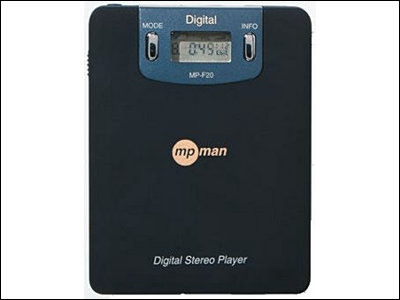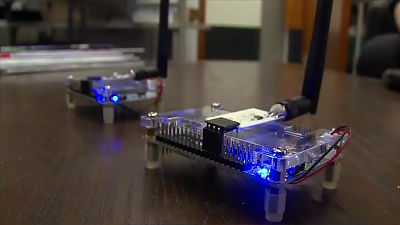A paper that predicted "Ubiquitous computing in the 21st century" in 1991 "The Computer for the 21st Century"

It is a world where information and communication technology can be used anytime and anywhereUbiquitousThe concept of the article written by Mr. Mark Weiser, lead principal computer scientist of Xerox Palo Alto Research Center in 1991The Computer for the 21st CenturyIt first appeared in the world and it became known to the world. A small mobile terminal such as a smartphone was developed as the Internet was born, and ubiquitous society is being realized by the appearance of cloud computing, but in the "world of ubiquitous computing in the 21st century" drawn in this thesis The future of computing that is aimed for is shown, and even now it is richly suggested in the 21st century.
The Computer for the 21st Century
(PDF file)https://www.lri.fr/~mbl/Stanford/CS477/papers/Weiser-SciAm.pdf

Mr. Weiser has announced "The Computer for the 21st Century" in 1991 that personal computer (PC) is not yet penetrated into the home yet. Mr. Weiser is writing a paper from the example of "Writing (written)" in order to do a departure where the computer talks about future computing in a situation that is not common.
"Innovative technology is a technology that disappears," Weiser says. This is because when the technology becomes too general and becomes commonplace in everyday life, the existence of technology itself disappears from people's consciousness. Mr. Weiser believes that "writing" of information technology born for the first time in the world is an innovative technology in this meaning.

In the past, human beings inherited technology through tradition by mouth, but due to human memory and narrator's resource problems, the technology to store information was limited. However, with the introduction of technology to save the information of writing as a physical thing, science and technology and cultural appreciation have greatly developed, leading to the creation of a modern society. Written as an innovative technique, but now it has become a common existence in daily life, from books, advertisements, memos and even graffiti, as a result, we are no longer conscious of the technique itself as writing. Writing that has reached technologies that disappeared from people's consciousness is a truly innovative technology in that sense. And in the computing of the 21st century, Mr. Weiser predicted that "computer" became commonplace to the extent that it disappeared from people's perception and ubiquitous came.
At the time of 1991, PC had a prejudice of "difficult thing" for the general public, and that there was a necessity to be strongly conscious of itself. Regarding the cause that seems to be difficult, Mr. Weiser thinks that not only the problem of UI which hinders operability but also the naming "personal computer" was wrong. At the time, Mr. Weiser said that even the best notebook PC is just a single machine, having a notebook is the same as having only one book in the "writing" world. Even if you can use audio and movies, even if you are always conscious of the screen, you can not call it true multimedia, wearing special glasses and wearing special suit and operating with a special glove, etc., innovation It is far from the information technology that should be referred to as technical technology.

A PC of the time and Mr. Alan Kay advocated "Dynabook (Dynabook)"Proposed by Apple Computer's John Scully CEO"Knowledge Navigator (Knowledge Navigator)"All are computers in transition period, Weiser anticipated that ubiquitous should be realized for the first time by incorporating the computer into a part of the living environment.
At the Palo Alto Research Center at that time, as the prototype (prototype) realizing ubiquitous unlike the conventional computer, we developed three kinds of terminals "Tab (tab)", "Pad (pad)" and "Board It was. It is assumed that "Tabs are post-it, pads are like paper, boards are like blackboards", and each terminal is supposed to cooperate with each other, although size, role and function are different.

·tab
The smallest 'tab' is a terminal like a calculator. It was assumed that not only displaying the information on the tab, but also having the function of holding personal information. At that time, Palo Alto Research Institute was developing a business card-sized electronic key terminal "Door Badge" for door lock authentication, but Active Badge seems to be said to be the prototype of the tab.

In addition to unlocking by the tab, it can be used as an authentication tool for sharing location information, recording the attendance of the meeting, or drawing out your own data from other information terminals. In the 21st century it seems that tabs were realized by smartphones.

·pad
"Pad" is a thin display terminal which is one size larger than the tab. Mr. Weiser says the pads are similar but not similar to thin notebook PCs. "I can bring a laptop anywhere but it's a big failure just because I have to take it," Mr. Weiser said. Unlike a notebook type "personal" computer with personality, it is the pad that can change the contents to be displayed according to the opponent, so that the pad can be displayed dedicated information using tabs It is said that it is sought.
In addition, it is important that pads of the same standard are all over the world all over the world, it is also designed to arrange multiple pads to create huge display. Pads have already been realized by combining tablet terminals and cloud services from size, shape and function.

·board
And the largest size ubiquitous computer is "board". Boards installed on the walls of the house can be a TV, a bulletin board, and in the office it can be a substitute for a whiteboard or a flip chart. Of course, the board has a synchronization function that aligns the display content with the remote place.
Mr. Weiser assumed that the board was operated by using "electronic choke", unlike the PC using conventional keyboard and mouse. The choke can touch and write letters, and it is possible to operate from remote. Also, in the case of a short person, it is difficult to touch the top of the board with chalk, so it is pointed out that there is a need for software development different from the software prerequisite to using a conventional keyboard and mouse . The board is "Surface Hub"Google's"Jamboard"It seems that it is close to the image.
According to Mr. Weiser who thought that the tabs, pads, and boards are just entrances as a tool to realize ubiquitous, the elements necessary for realizing ubiquitous computing are "low-cost terminals" and connect them "Network", and "software" to realize universal application.

Mr. Weizer was thinking very optimistically about realization of "low price terminal". In 1991, at 640 × 480 resolution display, 16 MB storage, we expect to have a display of 100 grams and a display of GB class with a lightness of 1 inch thin at 1000 x 800 in 10 years It was. And finally, TB class storage was sold very ordinary and expected to eliminate old information, but apparently it seems that the second half expectation has gone off.
In addition, Mr. Weiser said that even if the tab is convenient as an electronic key or memo pad, if it is robbed by a rival company's spy, it should be a big thing, pretending the importance of the cryptosystem and assuming damage of computer hacking It also refers to the system where "digital fingerprint" remains. Moreover, if a society where computer existence can not be conscious is realized, as the situation as of 1991 seems to change as soon as everyone sitting next to one desk and face everything but not acknowledging the existence of colleagues, weather He was thinking. In real ubiquitous computing, unlike the computer world where the real world disappears due to virtual reality at the time, it is easier for human beings to interact with each other by support of computers that have extinguished their existence, It will be able to experience at a deep level. It seems that this is still realized by tools such as SNS.

Mr. Weiser touches on the "Ore radio" at the end of the paper and the early 20 th century. At that time, only the bright people were technologies capable of making ore radio that used radio as a hobby. However, as of 1991 radios with much better performance than ore radio became full of living space, and as a result, those who self-made ore radio became less clear. The same thing will happen on a computer, Mr. Weiser predicted that ubiquitous computing will realize that "computer geeks" will be reduced. "What is more important than ubiquitous computing is that you can overcome the problem of overinformation.In the woods there are more information than any computer system that is present, There is no one who feels frustration with a walk in the forest even if there is a person who feels the distribution.When computers become common to everywhere and not being forced to use and become fit for human life, "We will be comfortable like walking," Mr. Weisters concludes his paper.
Related Posts:
in Hardware, Software, Web Service, Science, Smartphone, Posted by darkhorse_log







